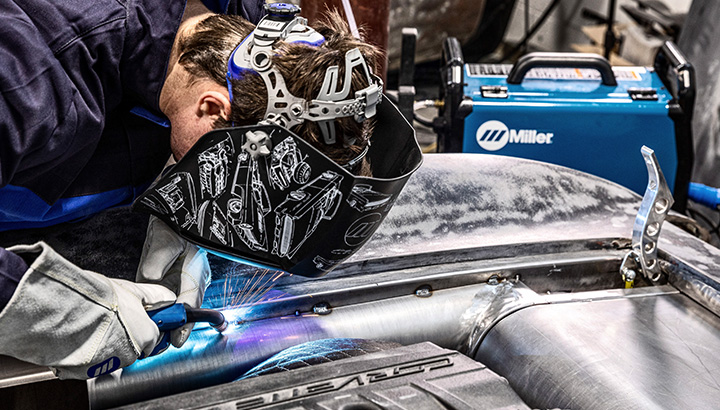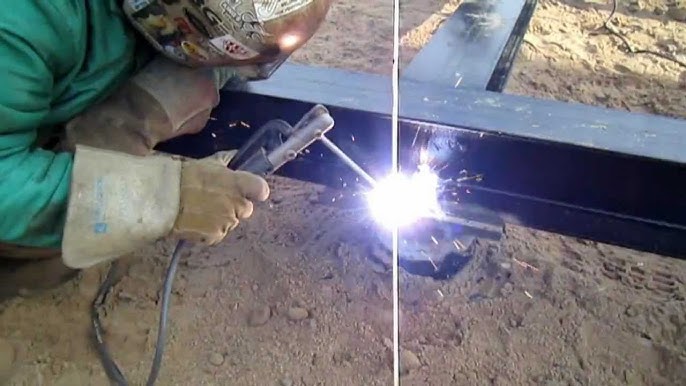All About Welding: Secret Insights Into Techniques and Best Practices for Success
Welding includes a range of techniques, each fit for specific materials and applications. Comprehending these approaches, such as GMAW, SMAW, and TIG, is important for accomplishing ideal outcomes. Furthermore, the right equipment and safety techniques can not be overlooked. As preparation and repairing play crucial duties in the welding process, mastering these aspects can greatly boost the top quality of the final product. What are the vital variables that assure a successful weld?
Comprehending Different Welding Strategies
Welding strategies incorporate a variety of methods, each matched to specific applications and products. Amongst one of the most common strategies are Gas Steel Arc Welding (GMAW), Protected Metal Arc Welding (SMAW), and Tungsten Inert Gas Welding (TIG) GMAW, likewise recognized as MIG welding, is prominent for its speed and flexibility, making it perfect for slim materials. SMAW, or stick welding, is preferred for its simpleness and efficiency in outside atmospheres, especially with thicker metals. TIG welding offers accuracy and control, making it suitable for detailed work and non-ferrous steels (Welding). Each technique has its distinct advantages and factors to consider, permitting welders to pick the very best method based upon the project's requirements, material type, and preferred end results. Comprehending these strategies is necessary for successful welding
Essential Welding Equipment and Tools
While numerous welding methods require particular abilities, the right tools and tools are equally vital for achieving high quality outcomes. Necessary welding equipment includes welding equipments, which vary relying on the strategy-- such as MIG, TIG, or stick welding. Protective gear, consisting of aprons, gloves, and helmets, assurances safety and convenience throughout the process. On top of that, fixtures and clamps assist safeguard products in position, guaranteeing accuracy in welds. Consumables like welding poles, cord, and securing gas are also critical components that influence the top quality of the weld. Tools such as mills and cutters assist in surface preparation and post-weld finishing, adding to a professional end result. Purchasing top notch devices inevitably boosts the efficiency and performance of welding jobs.
Security Practices in Welding
Proper safety and security practices are vital in the welding market to shield employees from potential risks. Welders have to use proper individual safety equipment (PPE), consisting of helmets with correct shading, gloves, and flame-resistant clothing. Appropriate air flow is essential to reduce direct exposure to damaging fumes and gases produced throughout the welding procedure. Additionally, employees ought to be trained in the correct handling of welding devices to avoid mishaps. Fire precaution, such as keeping combustible products far from the welding location and having fire extinguishers easily offered, are essential. Normal examinations of equipment and work spaces can assist recognize prospective hazards prior to they bring about mishaps. By sticking to these safety and security practices, welders can develop a more secure working environment and reduce dangers associated with their profession.
Readying Materials for Welding
Preparing materials for welding is an essential step that substantially influences the quality and honesty of the end product (Belgrade Welding). Proper prep work involves cleansing the surfaces to eliminate impurities such as corrosion, dust, and oil, which can jeopardize the weld. Methods such as grinding, fining sand, or utilizing solvents are generally utilized to accomplish a clean surface. Additionally, making certain that the products mesh comfortably is essential; gaps can result in weak welds. It's additionally vital to consider the positioning and positioning of the components, as this will certainly affect the convenience of welding and the final result. Lastly, choosing the ideal filler product and guaranteeing compatibility with the base steels is vital for her latest blog achieving solid, sturdy welds
Tips for Getting High-Quality Welds
Attaining high-quality welds needs focus to detail and adherence to best techniques throughout the welding procedure. Proper joint prep work is vital, ensuring surface areas are cost-free and clean from impurities. Selecting the appropriate filler product and welding method based on the base metals is important for ideal bonding. Preserving constant traveling rate and angle while welding can advertise and prevent flaws harmony. Additionally, managing warm input is essential; too much warmth can lead to bending and compromised joints. If required, on a regular basis examining the welds throughout the procedure enables for immediate adjustments. Using appropriate post-weld treatments, such as cleaning and tension relief, can improve the durability and integrity of the weld, eventually making sure an effective end result.
Repairing Typical Welding Issues
Welding usually presents challenges that can influence the quality and honesty of the end product. Usual problems such as porosity, inconsistent weld grains, and overheating can emerge, each calling for particular troubleshooting strategies. Recognizing these issues is crucial for welders to boost their skills and achieve optimal results.
Porosity Problems Explained
Porosity can often be overlooked, it remains a critical problem in welding that can endanger the stability of an ended up product. Porosity refers to the visibility of small gas pockets within the weld grain, which can lead and weaken the joint to premature failure. This issue generally emerges from contaminants, wetness, or improper shielding gas protection throughout the welding process. To alleviate porosity, welders need to verify that the base materials are tidy and completely dry, use ideal protecting gases, and preserve constant welding parameters. Routinely checking the equipment and setting can likewise aid recognize possible problems before they materialize in the weld. Attending to porosity efficiently is crucial for achieving solid, long lasting welds that fulfill top quality requirements.

Irregular Weld Beads
Irregular weld beads can substantially affect the quality and strength of a finished item. Numerous variables add to this issue, including incorrect traveling speed, incorrect amperage setups, and irregular electrode angles. When the welder relocates as well quickly, a grain may appear slim and lack penetration, while moving also gradually can create extreme build-up. Additionally, making use of the wrong amperage can lead to either undercutting or too much spatter, both of which compromise weld integrity. The welder's strategy, such as irregular torch activity, can additionally result in unequal grain appearance. To alleviate these problems, welders need to concentrate on preserving steady, controlled activities and making certain correct devices settings to accomplish harmony in their welds. Consistency is essential to accomplishing strong and trusted welds.
Overheating and Warping Issues
Excessive heat during the welding process can cause substantial overheating and buckling concerns, affecting the architectural integrity of the workpiece. These problems usually manifest as distortion, which can jeopardize positioning and fit-up, making additional assembly challenging. Elements contributing to overheating include the selection of welding specifications, such as voltage and travel speed, along with the sort of product being bonded. To mitigate these concerns, welders need to maintain consistent traveling rate and ideal warmth input while checking the work surface temperature level. Additionally, preheating or post-weld warmth therapy can assist ease tensions brought on by quick cooling - Montana Mobile Welding and Repair. Normal examination and adherence to finest practices are crucial in avoiding getting too hot and making sure the long life and dependability of bonded frameworks
Regularly Asked Inquiries
What Are the Career Opportunities in the Welding Sector?
The welding industry supplies diverse occupation possibilities, consisting visit this site of settings as welders, designers, instructors, and inspectors. Professionals can operate in production, building, aerospace, and auto fields, gaining from solid need and competitive incomes in various duties.
Exactly How Can I Improve My Welding Speed Without Giving Up High Quality?
To enhance welding rate without compromising top quality, one need to exercise efficient strategies, maintain this equipment, enhance setups, and boost hand-eye control. Normal training and looking for feedback can additionally considerably add to achieving much faster, top notch welds.
What Qualifications Are Available for Welders?
Countless qualifications exist for welders, including those from the American Welding Society (AWS), the National Center for Building Education And Learning and Research (NCCER), and various industry-specific organizations. These qualifications enhance employability and show skill effectiveness.
Just How Does Welding Influence the Properties of Metals?
Welding influences the homes of steels by changing their microstructure, which can cause modifications in firmness, ductility, and stamina. Warm input and cooling rates throughout the procedure considerably impact these material attributes.
Can I Weld Dissimilar Metals With Each Other?
